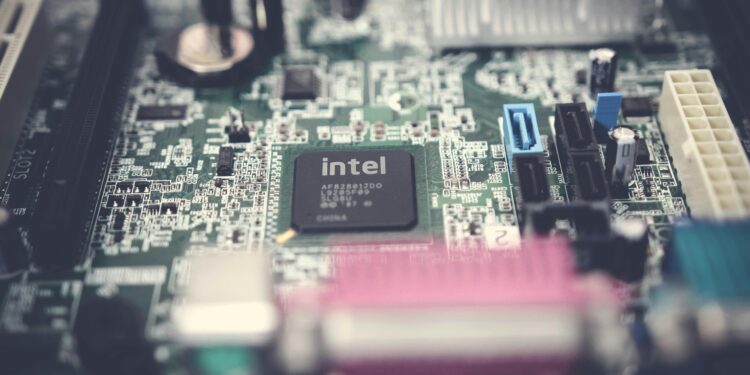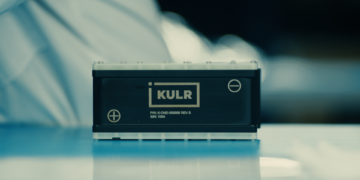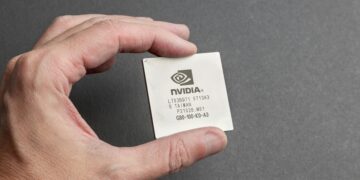Failed Contract Highlights Competitive Pressures and Strategic Shifts
In a bid to reinvigorate its struggling business, Intel Corporation (INTC) sought to design and fabricate the chips for Sony’s next-generation PlayStation 6. However, in 2022, Intel lost the contract to its rival, Advanced Micro Devices (AMD), a blow that set back Intel’s ambitions to dominate the gaming console chip market and expand its contract manufacturing business. This loss, kept under wraps until now, showcases the immense pressure on Intel as it tries to regain its footing in an increasingly competitive semiconductor industry.
A Lucrative Opportunity Slips Away
For Intel, winning Sony’s PlayStation 6 chip contract would have been a major victory, especially as it was competing with AMD—a long-time rival—and Taiwan Semiconductor Manufacturing Co. (TSMC). The contract would have involved designing and fabricating the custom chips that power Sony’s upcoming game console, generating billions of dollars in revenue. Intel and AMD were the final contenders in this competitive bidding process, but ultimately AMD secured the deal.
The contract represented a golden opportunity for Intel’s foundry unit, a central pillar of CEO Pat Gelsinger’s strategy to turn around the company. Gelsinger, who took the helm in 2021, has focused on establishing Intel as a key player in the foundry business, a sector dominated by TSMC and Samsung. The PlayStation 6 chip contract would have delivered a steady, long-term revenue stream, fabricating thousands of silicon wafers each month—a major boost to Intel’s foundry efforts.
Despite months of negotiations, involving high-level meetings between Intel’s and Sony’s CEOs and extensive talks with engineers and executives from both companies, Intel could not secure the contract. A dispute over pricing and profit margins ultimately thwarted the deal. Intel reportedly struggled to agree on how much profit it would make on each chip, allowing AMD to undercut its bid and win the contract.
Console Chips: A Strategic but Less Profitable Market
While the gaming console market is not as lucrative as other semiconductor sectors—such as artificial intelligence (AI) chips—Sony’s PlayStation business still presents a significant opportunity. Historically, Sony consoles have sold over 100 million units across their lifecycle, offering steady business for chip manufacturers. For Intel, the PlayStation 6 contract would have provided a foothold in the console chip market while aiding its foundry ambitions.
Intel’s foundry business, launched in early 2023, has struggled to attract high-profile clients and remains in need of marquee contracts to prove its viability. Had Intel secured the PlayStation 6 chip contract, it could have kept its foundry unit busy for years, contributing approximately $30 billion in revenue over the life of the contract, according to internal projections.
Backward Compatibility and Engineering Challenges
One significant hurdle in Intel’s negotiations with Sony was the issue of backward compatibility. Sony’s PlayStation consoles are known for allowing users to play games from previous generations on new hardware. Moving from AMD, which designed the PlayStation 5 chip, to Intel would have posed engineering challenges to ensure that older games would work on the PlayStation 6.
Intel’s engineers reportedly discussed these challenges with Sony, but the complexity and cost of ensuring backward compatibility were significant concerns. Ultimately, Sony decided to stick with AMD, which already had experience with PlayStation chip designs and could ensure a smoother transition for the next-generation console.
Intel’s Broader Struggles
The loss of the PlayStation 6 contract is just one of several challenges Intel has faced in recent years. The company reported disappointing financial results in the second quarter of 2023, including a $7 billion operating loss in its manufacturing businesses. Additionally, Intel has announced plans to cut 15% of its workforce and scale back capital spending on factory expansions, further complicating its foundry ambitions.
CEO Pat Gelsinger’s turnaround strategy, which includes splitting Intel’s design and manufacturing operations, has yet to yield significant results. The company’s foundry business continues to lag behind competitors like TSMC, and it has struggled to secure new clients for its advanced 18A process, the manufacturing technology it hopes will drive future growth.
A Missed Opportunity with Far-Reaching Implications
Losing the PlayStation 6 contract not only represents a missed financial opportunity for Intel but also a setback in its efforts to become a competitive player in the foundry business. While AMD continues to gain ground in the gaming console chip market, Intel faces mounting pressure to attract new clients and establish itself as a major force in semiconductor manufacturing.
Without a marquee client like Sony, Intel’s path to rebuilding its foundry business remains steep. As the company navigates through strategic shifts and leadership changes, including the recent departure of high-profile board member Lip-Bu Tan, the PlayStation 6 loss serves as a reminder of the high stakes in the semiconductor industry.
You might like this article:Unity Cancels Runtime Fee and Announces Subscription Price Increases: What It Means for Developers and Investors











